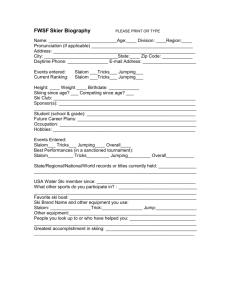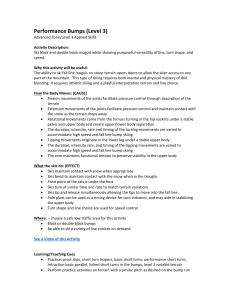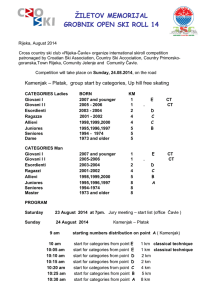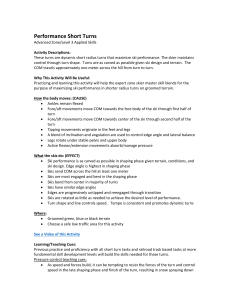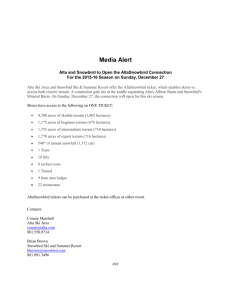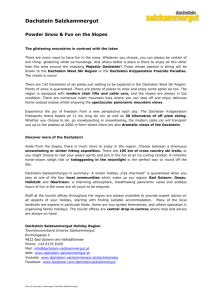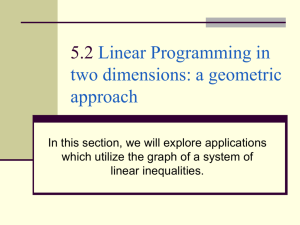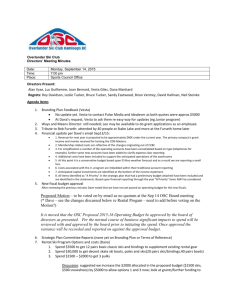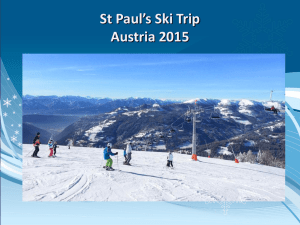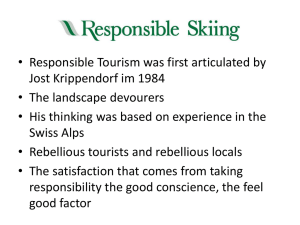2009-2010 JIV Stratton Training Center
advertisement
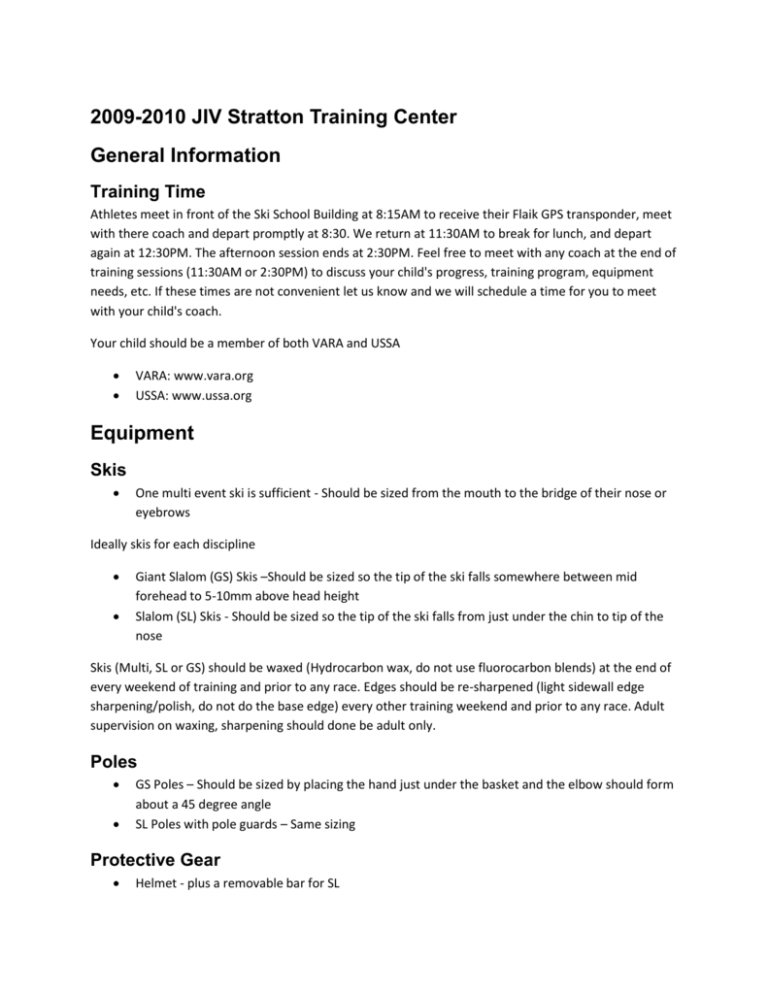
2009-2010 JIV Stratton Training Center General Information Training Time Athletes meet in front of the Ski School Building at 8:15AM to receive their Flaik GPS transponder, meet with there coach and depart promptly at 8:30. We return at 11:30AM to break for lunch, and depart again at 12:30PM. The afternoon session ends at 2:30PM. Feel free to meet with any coach at the end of training sessions (11:30AM or 2:30PM) to discuss your child's progress, training program, equipment needs, etc. If these times are not convenient let us know and we will schedule a time for you to meet with your child's coach. Your child should be a member of both VARA and USSA VARA: www.vara.org USSA: www.ussa.org Equipment Skis One multi event ski is sufficient - Should be sized from the mouth to the bridge of their nose or eyebrows Ideally skis for each discipline Giant Slalom (GS) Skis –Should be sized so the tip of the ski falls somewhere between mid forehead to 5-10mm above head height Slalom (SL) Skis - Should be sized so the tip of the ski falls from just under the chin to tip of the nose Skis (Multi, SL or GS) should be waxed (Hydrocarbon wax, do not use fluorocarbon blends) at the end of every weekend of training and prior to any race. Edges should be re-sharpened (light sidewall edge sharpening/polish, do not do the base edge) every other training weekend and prior to any race. Adult supervision on waxing, sharpening should done be adult only. Poles GS Poles – Should be sized by placing the hand just under the basket and the elbow should form about a 45 degree angle SL Poles with pole guards – Same sizing Protective Gear Helmet - plus a removable bar for SL Shin Guards (for SL) Goggles - Lenses for flat light are the best and should have a clear lens for the night race at Willard Mt Clothing Please make sure that your son or daughter is properly dressed for the cold weather. Keep in mind that it is usually 5-10 degrees colder at the top of the mountain than the base area. GS Suit with or without padding Padded top if not in GS suit Zip Off Warm Ups and/or Shorts Teaching Methodology Our approach to teaching at the JIV level is to first explain the skill set using a common vocabulary invoking a cognitive learning process. After the athlete is exposed to the skill set verbally by the coach he will demonstrate the skill to reinforce a positive visual image. The student is required to practice on suitable terrain until the skill is acquired with a level of expertise. This process is repeated until the athlete can execute automatically. Through daily skill development and assimilation, the athlete focuses on specific concentrated techniques, goal strategies, proper self-talk and positive effective imagery utilization. Coaches will work with the athlete, providing a sound plan for performing the groundwork of each specific skill set along with developing a mastery of the tactical aspects of ski racing. Technical Skill Focus Balanced athletic stance – Balanced - Efficient - Athletic Position Dynamic Balance – Maintaining balance in motion Re-centering – Returning to the a balanced athletic stance during transitions Transfer weight – Use ankle and knee articulation to precisely ably weight from one foot to the other Early pressure – Weight transfer under the center of mass to ably early pressure to the new ski Pressure Control - Ability to manage edge angle and pressure to create the required turn shape Proper body direction and angulation – Ability to dynamically create various ski edge angles through the use of ankle, knee, hip, and body inclination Pole Plant – Consistent use of a proper pole plant Technical - Season Goals The athlete will be able to execute and maintain: A good controlled athletic racing stance Can use control and rhythm with consistent use of a proper pole plant Ski linked turns of varying size and speed through all terrain and conditions relying primarily on skeletal support at all times. Will be able to use dynamic balance while skiing a complete variety of terrain, conditions, turn shape and size. Is able to pressure the skis into the fall line in short radius turns and exit the fall line with a carved arc. Exhibits knowledge of pressure and demonstrates how to manage it during changes in terrain Has refined the ability to ski and compete in all types of snow conditions and terrain with equal success. Has been exposed to, and is adaptable to, all of the variables of terrain, snow conditions and course types. Will be able to use appropriate edging and pressure control to ski effectively in varied terrain through all SL and GS turn radiuses Utilize the entire space available between gates to complete the required change of direction, and minimize the effect of ski/snow friction to link turns with the minimum amount of traverse possible. Racing Tactics - Season Goals The athlete will be introduced to: Communicate with a coach the correct racing line using a common vocabulary Understand the impact of speed, terrain and course conditions on turn placement within a race simulation course Will begin to understand line selection that fits their abilities, with an understanding of risk/reward associated with various angles of attack Mentally rehearse and practice switching from non-focused to highly-focused state Use of Imagery to create success-oriented mental images and rehearse the competition line selection strategy Training and Race simulation time percentages *Based on 165 hrs Competition Starts Giant Slalom - 3 Slalom - 3 Super G - 2 Kombi - 1 Race Schedule 1/3 1/16 1/24 1/31 2/7 2/8 GS Mt. Snow SL Willard – night race GS Magic SL Magic SG training at Stratton SG Stratton 2/20 GS Bromley 2/26 State SG at Sugarbush 3/6 Open SL at Bromley 3/7 Shootout at Burke 3/7 Open GS at Stratton 3/13-14 States at Sugarbush Post Season and Special qualifying events http://www.vara.org/forms/AllRules/j45rules.asp Race Rules & Information http://www.vara.org/forms/AllRules/j45rules.asp

